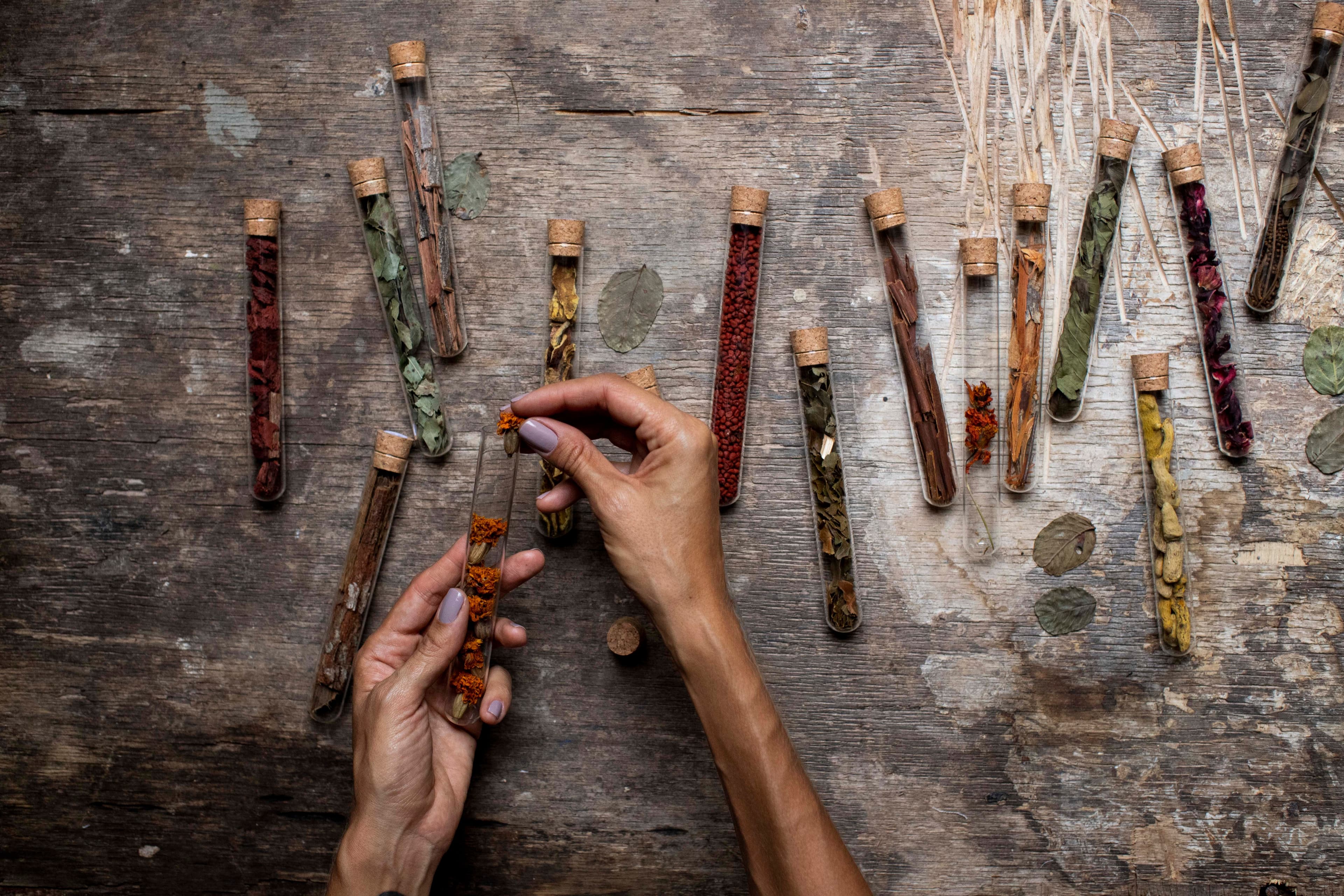Can you walk us through the chemical composition of some of the key dye-yielding plants you work with, and how these compounds interact with different textile fibres during the fixation process?
My research focuses on the incredible biodiversity of Brazil, exploring a variety of native dye-yielding plants, each with its unique chemical compositions and fascinating dye properties. Here, I’d love to highlight a few key species from this vibrant diversity and explain how their chemical compounds beautifully interact with textile fibers during the dyeing and fixation processes.
Urucum (Bixa orellana)
Rich in carotenoids, particularly bixin, which imparts vivid orange-red shades.
Bixin has a natural affinity for protein fibers like wool and silk, easily creating intense, lasting colors. For cellulose fibers, adding mordants such as alum or tannins enhances the dye’s adherence, forming stable, vibrant hues.
Jenipapo (Genipa americana)
Contains genipin, an iridoid compound that oxidizes when exposed to air, turning from clear to deep blue-black.
Genipin forms robust chemical bonds with protein fibers through amino acid reactions, offering excellent color durability. For cellulose fibers, pre-treatment with tannins can significantly improve dye permanence by creating additional binding sites.
Barbatimão (Stryphnodendron adstringens)
Contains high levels of tannins and flavonoids, generating shades from soft beige to deep brown.
Barbatimão tannins strongly bind to cellulose fibers, creating stable, wash-resistant colors through hydrogen bonding. On protein fibers, these tannins engage in multiple chemical interactions, ensuring highly durable dye fixation.
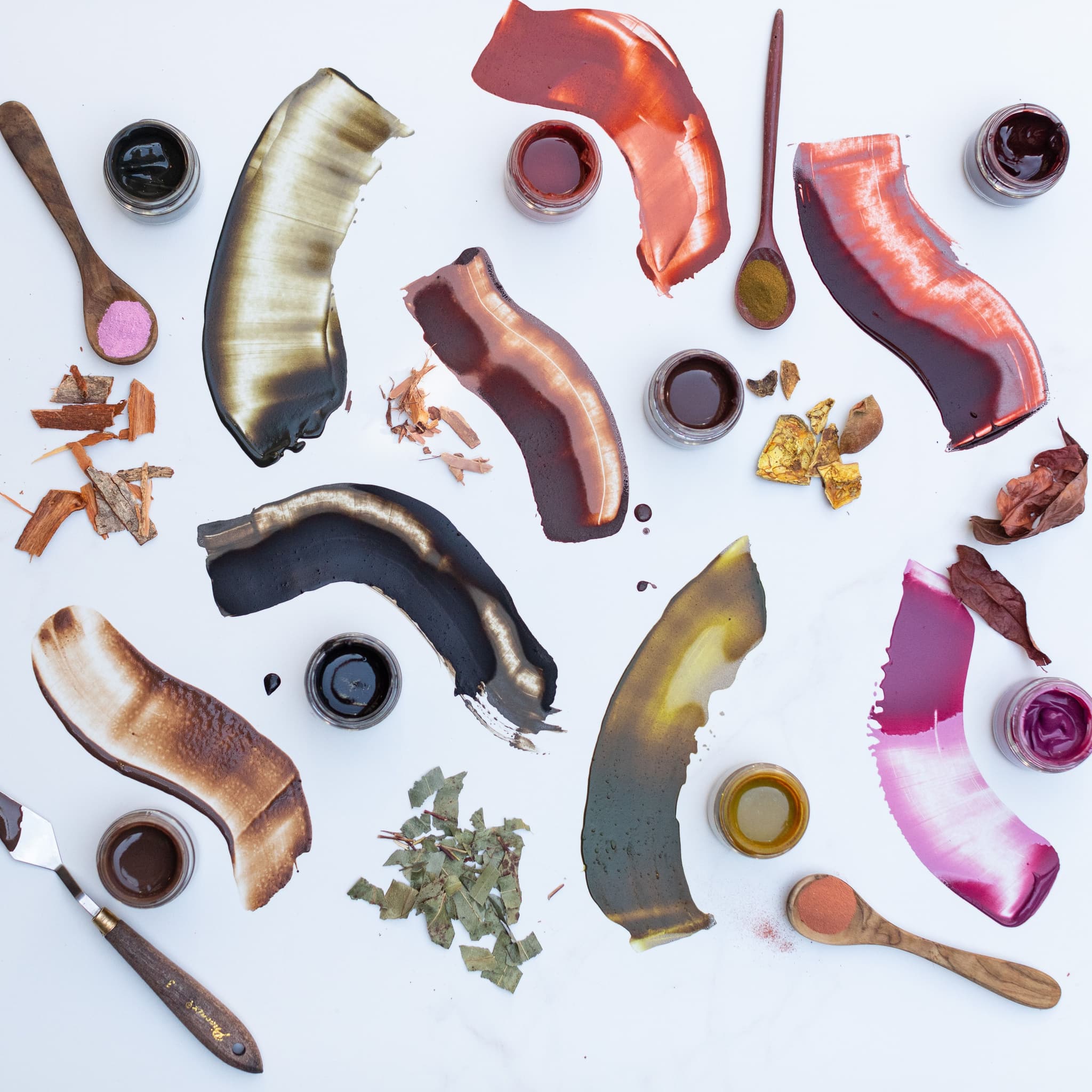
How do you evaluate the lightfastness, washfastness, and overall stability of your natural dyes, and what testing protocols or standards do you apply across different materials?
In evaluating my natural dyes, I conduct basic tests such as assessing lightfastness and washfastness.
It's important to embrace the nature of these vibrant, living colors—they often change over time, becoming deeper or undergoing oxidation processes that create entirely new shades. These dynamic transformations are part of the authentic beauty and charm of working with natural pigments, capturing the very essence of nature itself.
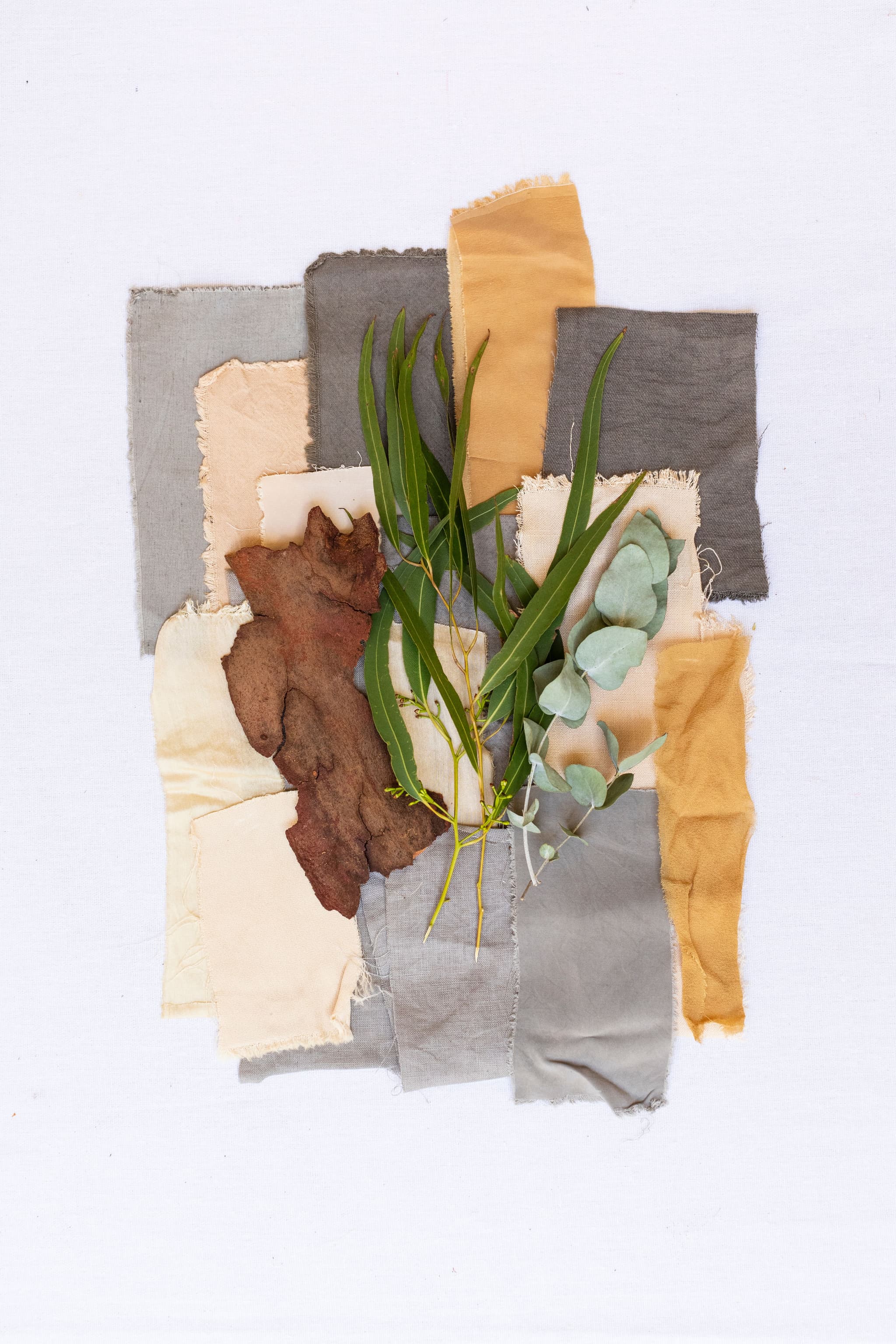
In your research, have you identified specific plant species within Brazilian flora that show exceptional potential for commercial-scale pigment extraction? What makes them promising from a molecular or processing perspective?
I have identified two exceptional Amazonian plant species within Brazilian flora that stand out for their significant potential in commercial-scale pigment extraction: Crajiru (Arrabidaea chica) and Jenipapo (Genipa americana).
Crajiru (Arrabidaea chica)
Crajiru demonstrates remarkable potential due to its abundance of anthocyanins and flavonoids—compounds well known for their stable molecular structures and vibrant pigmentation, ranging from delicate pinks to deep reds. From a processing perspective, anthocyanins are highly attractive commercially, as they readily interact with both protein and cellulose fibers, especially when combined with natural mordants. The relatively straightforward extraction methods—often simply aqueous or alcohol-based—are cost-effective and sustainable, supporting scalability. Additionally, the cultural legacy of Crajiru, historically used by Amazonian Indigenous communities for ritualistic and medicinal purposes, adds significant value to its commercial appeal.
Jenipapo (Genipa americana)
Jenipapo offers extraordinary potential due to the presence of genipin, a unique iridoid compound that oxidizes naturally upon air exposure, transitioning from clear to intense blue-black. This natural oxidation process simplifies pigment extraction and fixation, eliminating the need for complex chemical interventions. The molecular stability and strong binding capacity of genipin to textile fibers—especially protein-based fibers—ensure excellent colorfastness and permanence, both critical for market viability. Additionally, its deep-rooted cultural use by Indigenous Amazonian populations for ceremonial body painting provides added market differentiation, aligning beautifully with the growing global demand for culturally authentic, sustainably sourced natural dyes.
Both species thus combine ease of extraction, molecular stability, scalability, and cultural richness—positioning them uniquely for responsible commercial exploration in the natural pigment industry.
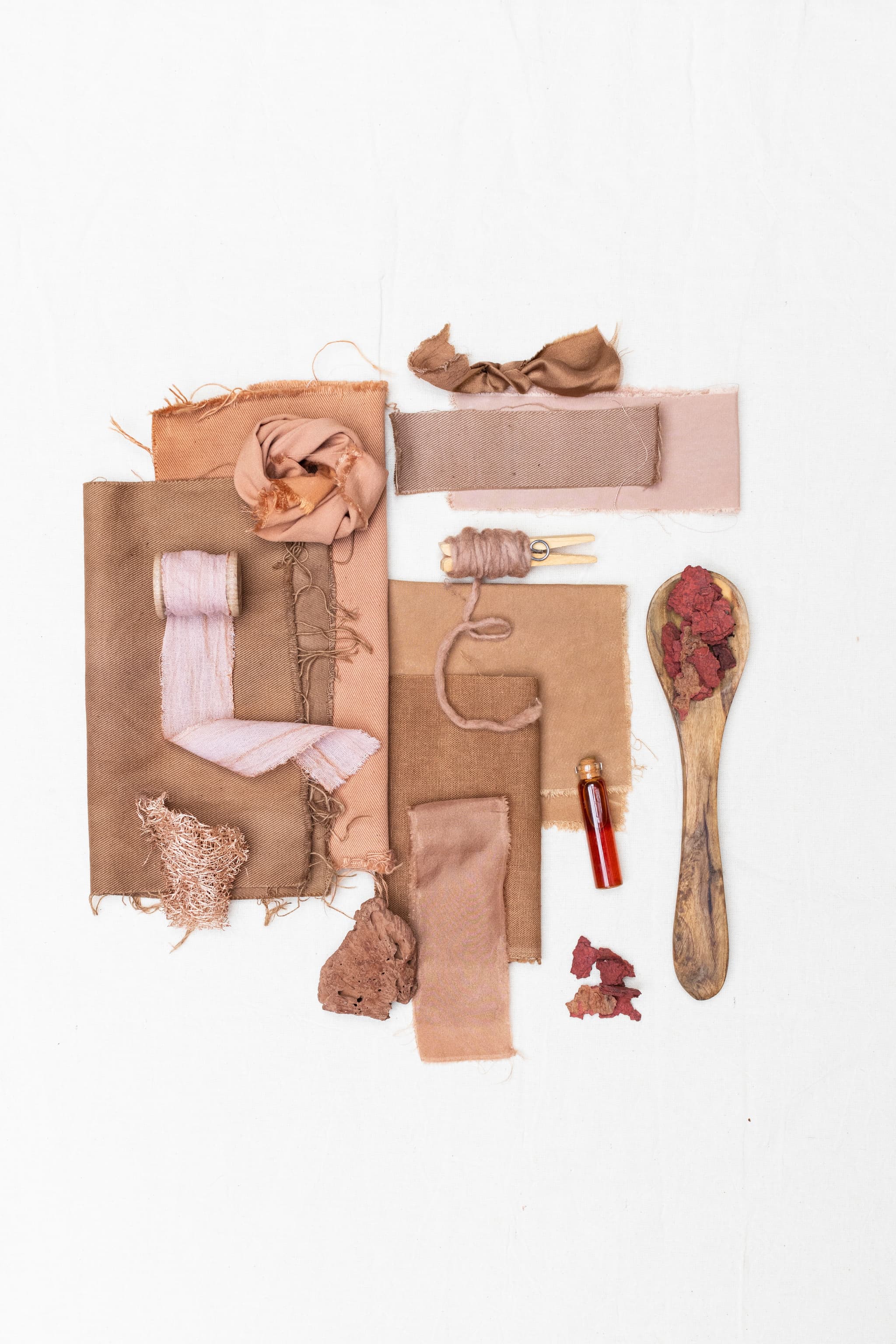
How do you approach standardisation of colour when working with biologically variable materials? Is batch-to-batch consistency achievable without synthetic additives?
I start by clearly communicating that natural dyes come from living sources—plants harvested at different times, locations, or under varying conditions—naturally resulting in subtle variations in shade and intensity. These nuances reflect authenticity and connection to nature, forming part of their intrinsic charm.
Consistency is maximized through meticulous documentation of extraction methods, dyeing protocols, temperature controls, and mordant ratios. Keeping detailed records of each batch allows for the replication of conditions as closely as possible, minimizing variation.
I standardize core processes such as harvesting seasons, drying techniques, pigment extraction times, pH management, and mordant types. These controlled parameters significantly enhance predictability and repeatability across batches, improving consistency without the use of synthetic additives.
When necessary, I carefully blend pigments from different batches to achieve consistent color outcomes. This blending approach, inspired by traditional artisanal techniques, allows natural variation to be harmonized rather than chemically manipulated.
Rather than striving for perfect uniformity, I emphasize educating users and consumers about the unique qualities of naturally dyed textiles. The subtle shifts in color—including oxidation or natural maturation—are presented as desirable characteristics, reflecting the living essence of the dyes.
Thus, while perfect consistency without synthetic additives is challenging, a thoughtful, transparent, and methodical approach can reliably achieve satisfactory consistency while embracing and celebrating the authentic beauty inherent in natural pigments.
Are there any bioactive properties within the dyes you work with that could present functional benefits for textiles, such as antimicrobial or UV-resistant properties?
Yes, the same species mentioned previously—Crajiru (Arrabidaea chica) and Jenipapo (Genipa americana)—possess intriguing bioactive properties that offer functional benefits to textiles, such as antimicrobial and UV-protective qualities.
Crajiru (Arrabidaea chica)
Rich in anthocyanins and flavonoids, Crajiru exhibits well-documented antimicrobial and anti-inflammatory properties.
Textiles dyed with Crajiru can gain natural resistance to microbial growth, potentially reducing odors and enhancing textile longevity. Additionally, anthocyanins possess antioxidant capabilities, providing mild UV protection—an advantage in clothing or fabrics designed for skin contact or prolonged outdoor use.
Jenipapo (Genipa americana)
Genipin, the primary pigment in Jenipapo, is renowned for its antimicrobial and antifungal properties. It is also known for its ability to form strong, stable cross-links with proteins.
Fabrics dyed with Jenipapo may benefit from enhanced resistance to microbial degradation, making them especially valuable for applications requiring hygienic properties. Furthermore, the robust molecular bonds formed during the dyeing process could potentially enhance fabric durability and structural stability.
Beyond these two species, many other plant-derived dyes—such as Barbatimão and Mangue Vermelho—contain high concentrations of tannins, which are known to offer antimicrobial activity and significant UV-blocking properties. These bioactive characteristics naturally add functional benefits, extending the applicability of naturally dyed textiles into protective and performance-oriented textile markets.
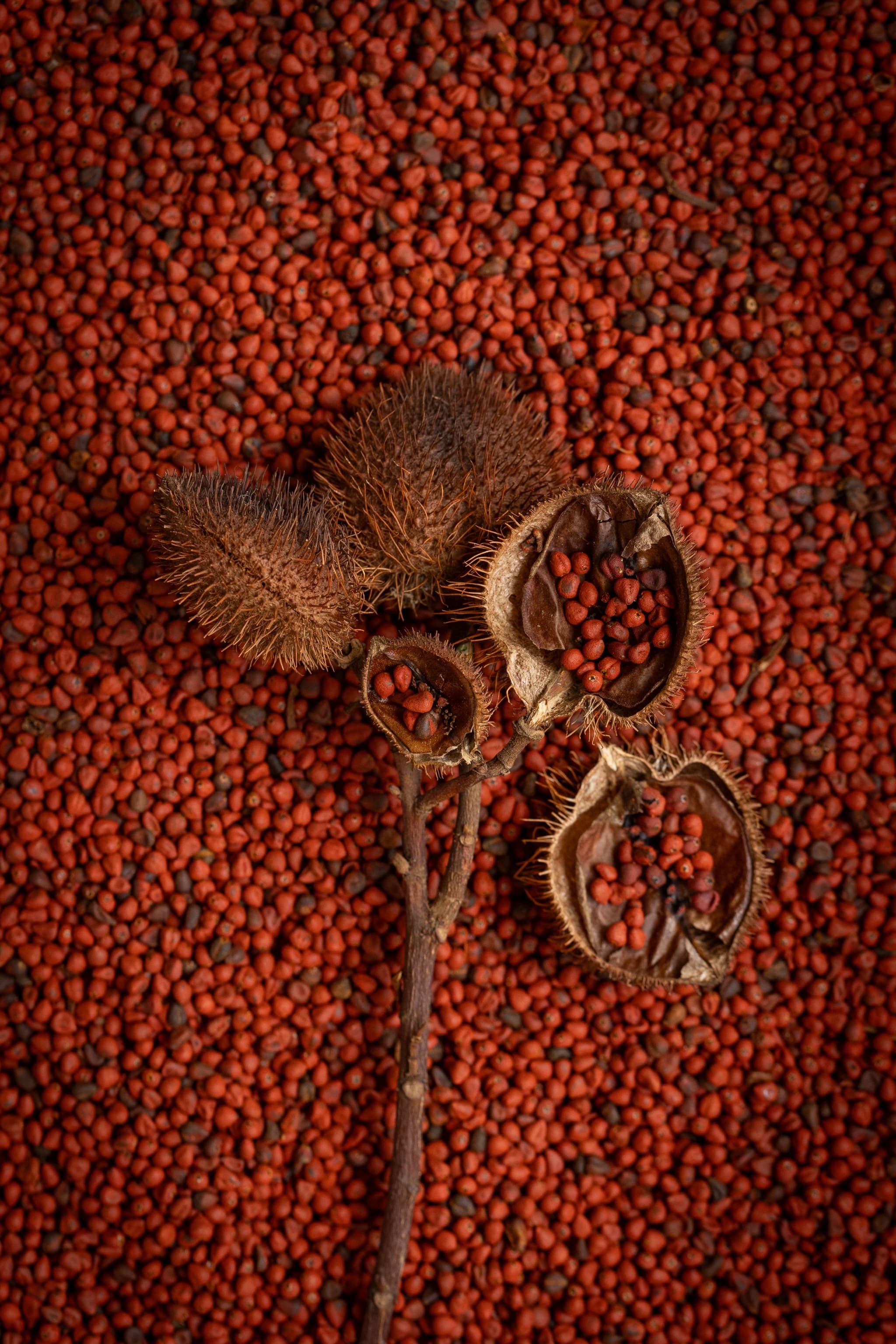
Considering lifecycle thinking, how do your plant-based dyes degrade at end-of-life? Have you conducted any biodegradability or ecotoxicity studies on dyed fabrics?
From a lifecycle perspective, plant-based dyes generally offer significant environmental advantages, as they naturally degrade without leaving harmful residues.
Dyes extracted from species such as Crajiru (Arrabidaea chica) and Jenipapo (Genipa americana) primarily consist of organic molecules like anthocyanins, flavonoids, and iridoids, which biodegrade naturally upon disposal. Being plant-derived, these compounds typically break down through microbial activity in soil or composting environments, returning safely to ecosystems without persistent toxicity.
Studies in the literature confirm that these classes of plant pigments pose minimal ecotoxic risks due to their inherent biocompatibility. The absence of synthetic additives, heavy metals, or persistent organic pollutants—common in synthetic dyes—substantially reduces ecological impact. Moreover, both traditional knowledge and existing scientific research support the environmental safety and biodegradability of these natural compounds.
